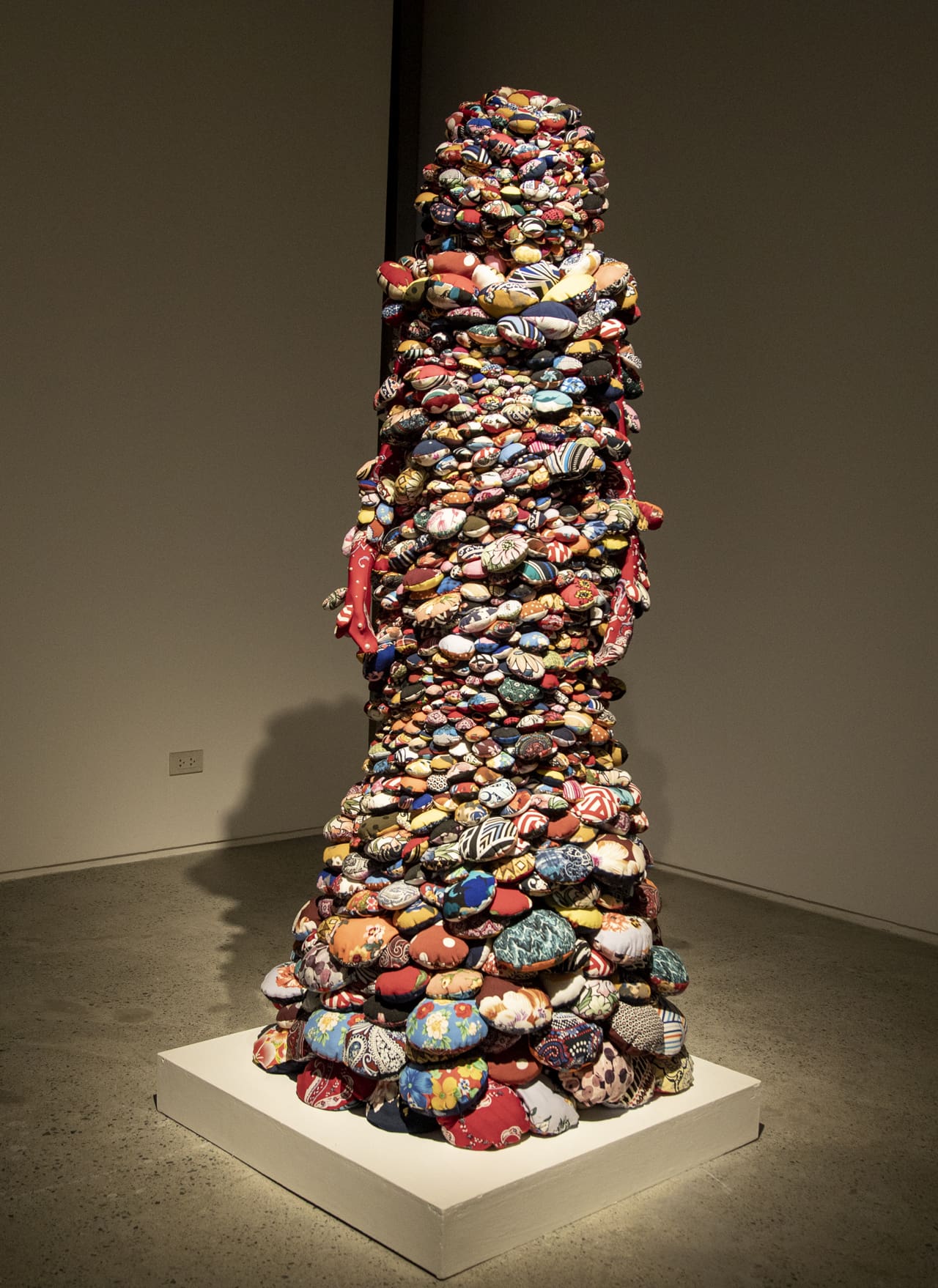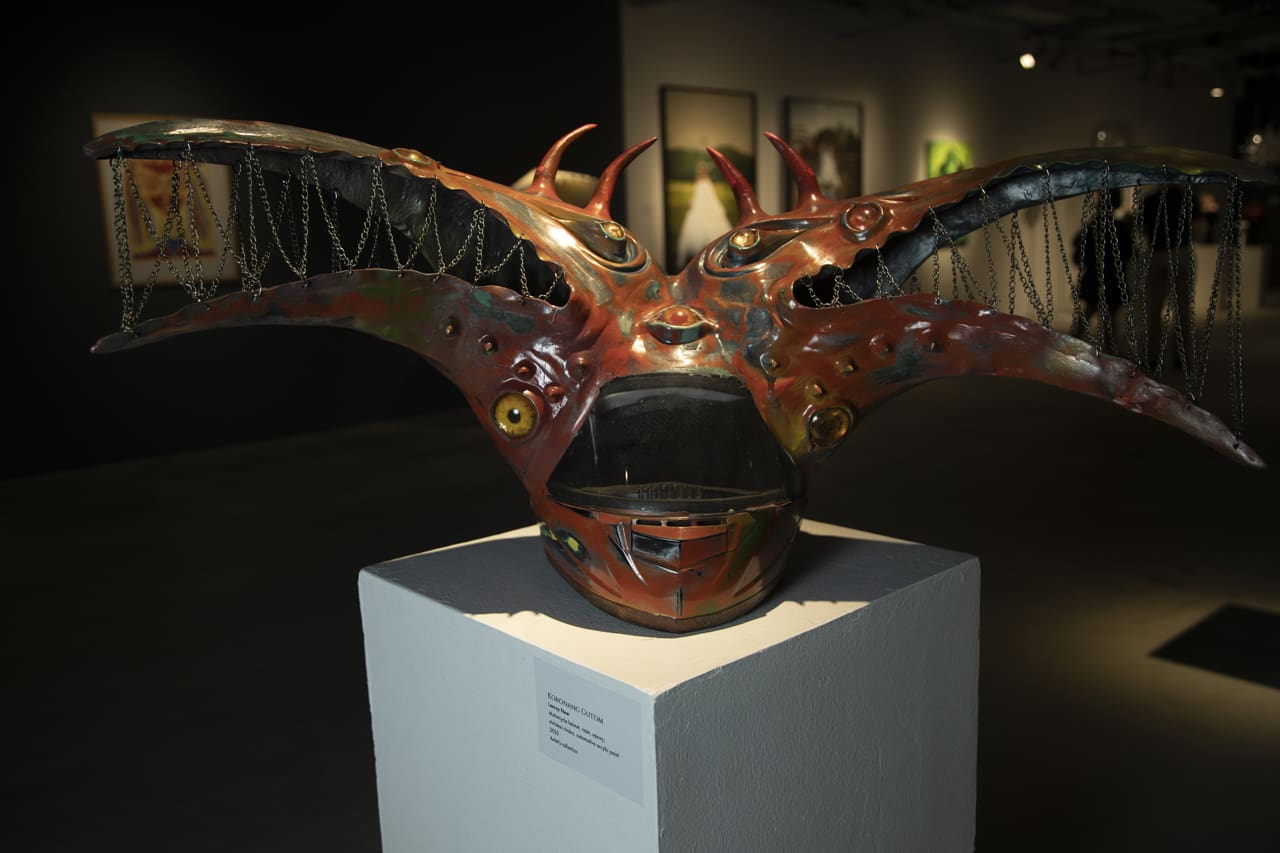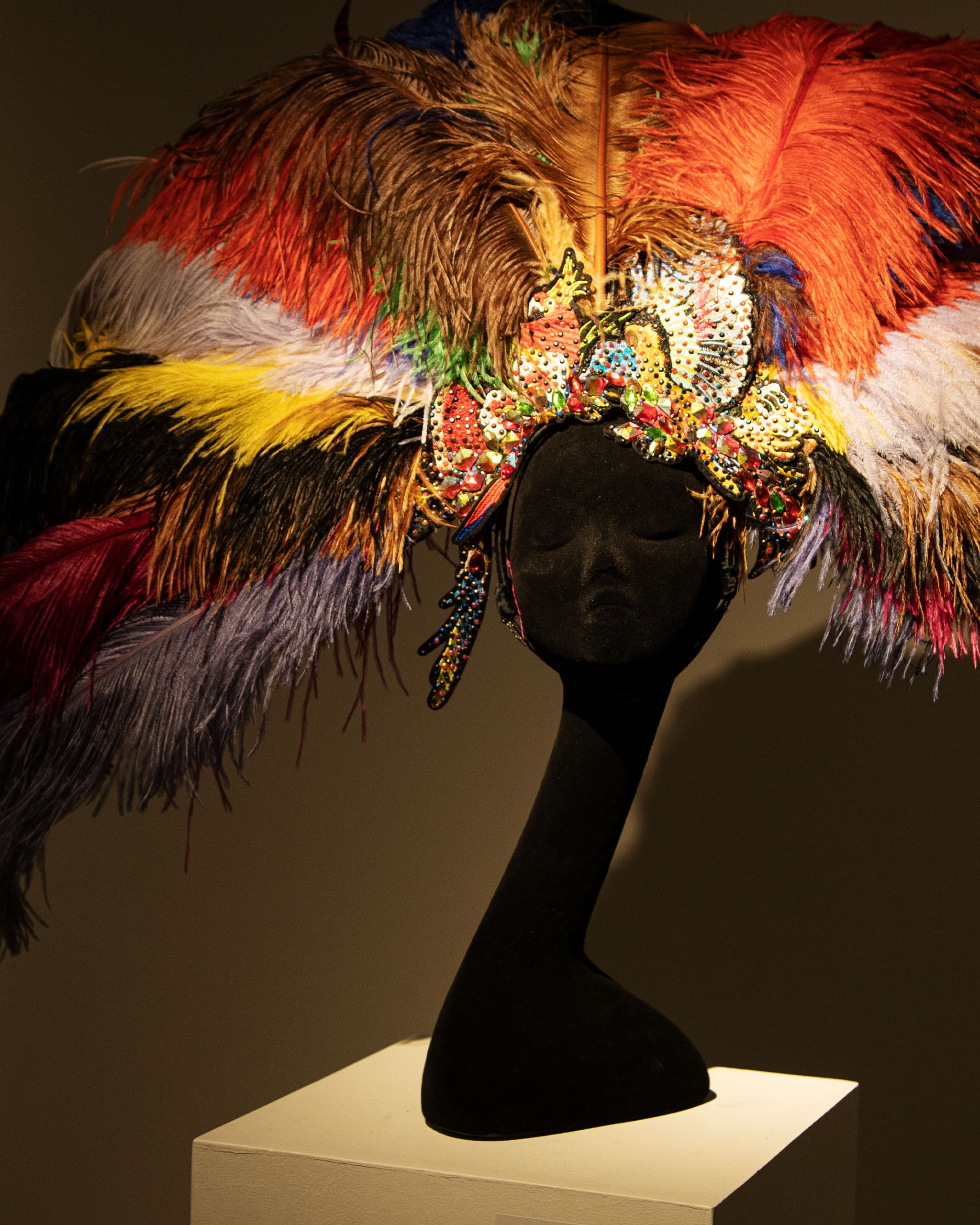“Feather Headdress.” Tessa Prieto Collection. Courtesy of Lucia Reyes
The Hat Of The Matter debuts ahead of the Metropolitan Museum of Manila’s grand opening at their new location.
The Metropolitan Museum of Manila is gearing up to relaunch to the public in February at its new location in Bonifacio Global City. In the meantime, before its grand opening, the museum is holding a string of limited exhibitions. The museum’s newest launch, The Hat of The Matter, was curated by Bambina Olivares and showcases a multimedia exhibition that allows viewers a peak into Filipino history through the narrative of hats. The show will run until November 30, 2022.
The exhibit, which spans the length of one of the exhibit halls on the third floor, features a mix of renowned artists like Pacita Abad, Benedicto “BenCab” Cabrera, Mich Dulce, Aze Ong, Albertus Swanepoel, Leeroy New, and many others.

In the exhibit notes by Olivares, she detailed how the Philippines is not, in general, known for being a hat-wearing country, despite having the perfect climate conditions for it. The branding specialist and journalist continued by saying this wasn’t always the case, and that pre-colonial Filipinos have long been depicted with native headgear.
She ended with a reflection on headwear as the intersection of utility and the expression of one’s personal style while embodying current issues and historical traumas, and how the exhibit also hopes to explore what exactly our relationship with the accessory is, both past and present.
Exploring Personal Narratives Through Headwear
This marks Olivares’ first foray into curation. She tells Vogue Philippines that the Metropolitan Museum of Manila reached out to her while she was still finishing up her Master’s program in the United Kingdom.
She details how, despite her hesitation, the institution only had encouraging words for her, “Which is great, it was an amazing vote of confidence and fun. Obviously, there’s an academic underpinning to the exhibition, but it was also just a chance to run with the theme and go crazy.”



“I didn’t want it to be a literal exhibition,” Olivares explains, recounting how the concept for this show came as a response to the exhibit of Korean hats across the hall, “First of all, it was very important to me to put a historical perspective … I really wanted to show it through art and multimedia.”
The Hat Of The Matter does just that. Interpretive paintings that allude to the headwear by artists like Wawi Navarroza and BenCab line the walls. Alongside them, interactive installations and displays speculate that hats, though perhaps less used as an accessory, manifest through various occupations or artistic expressions.
Artistic Interpretations
Featured aritst Mich Dulce tells us that for this show, she chose to curate a selection of her works made exclusively with handwoven T’nalak fabrics, “I wanted to tie it in with the concept of it being really Filipino, and how I integrate my work as a social entrepreneur and how empowerment still plays a role in the hats.”

The milliner, known for her use of local textiles in her craft, talks getting the chance to meet the T’boli people who weave the fabrics she uses and ask them what they think. “I got to visit them in 2019 I think when I was working with [Vice President] Leni,” she says, “They were like, ‘you know what, it’s so great that it’s on the head.’ Because for them it’s a sacred fabric, the designs come to them in their dreams, it’s really part of their culture. [They] were so glad that it’s put on top of the body like a crown because it’s in sync with the way [they] feel about this fabric.”
Installation artist Aze Ong, on the other hand, contributed a personal, performative artwork entitled “Queen Azineath,” which reclaimed her birth name—one she used to be embarrased by. Her installation piece, which originally started in New York before finding it’s way here and online, is comprised of a large, hand-knitted sculptural hat that sits over a throne in front of a video projection of her dancing.

“I was named after Azenith Briones, and I didn’t really like that,” Ong explains, “But then, for some reason, I think your true self comes out. Palagay ko, eto yung performance na nagtahi sa puso ko, katawan ko, kaluluwa ko. I felt like me and my work became one and it deserved to be named Queen Azineath, my real name.” [This is the performance that sewed together my heart, my body, and my spirit.]
